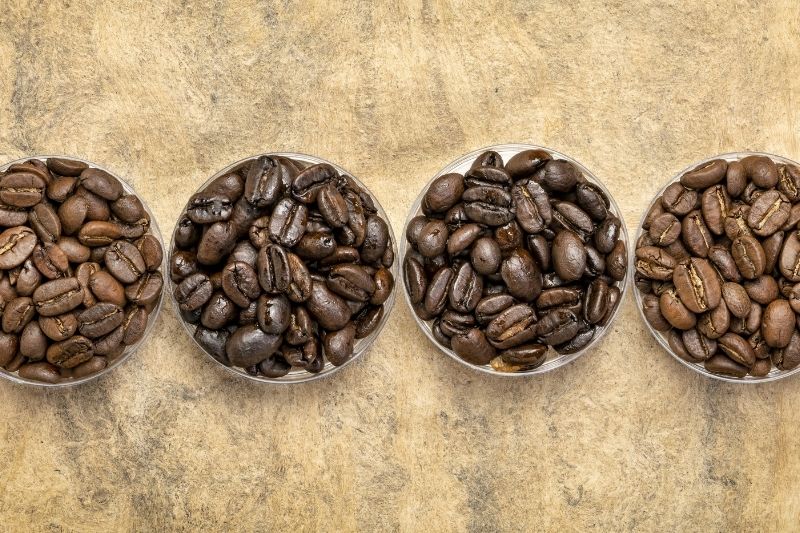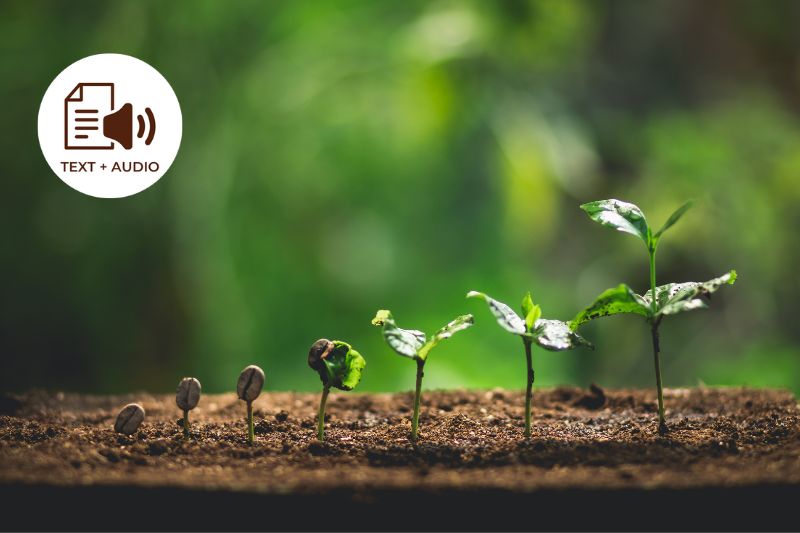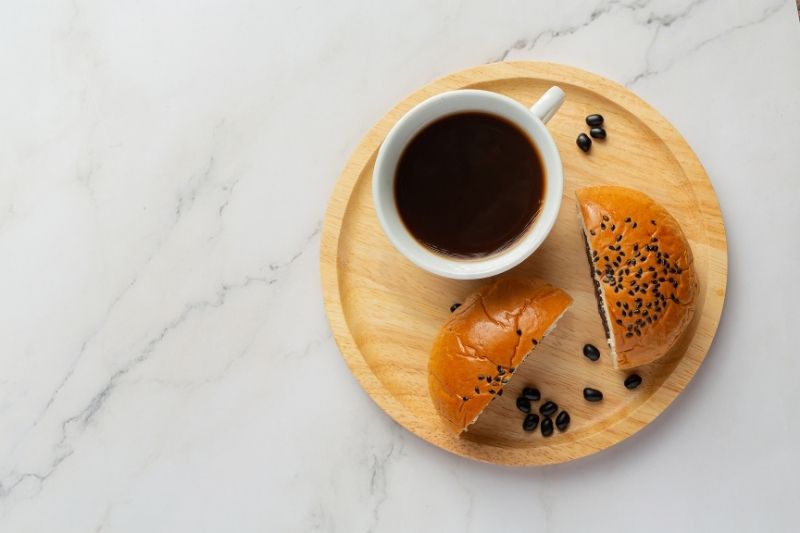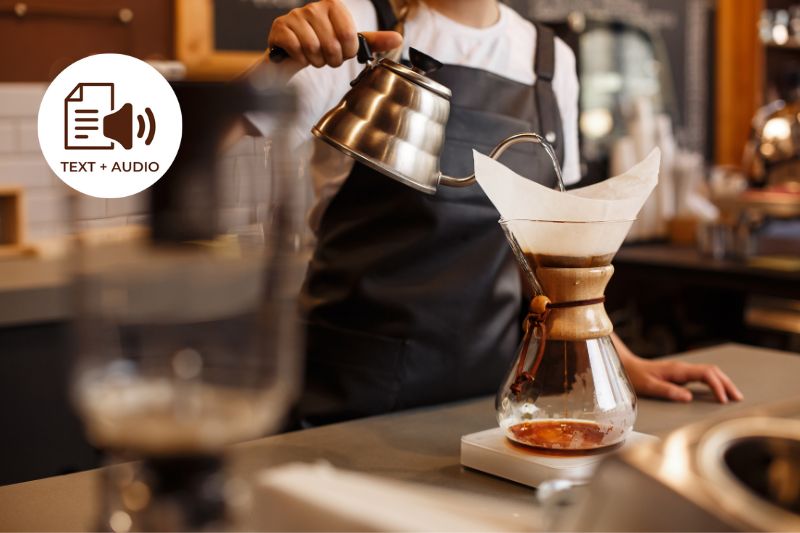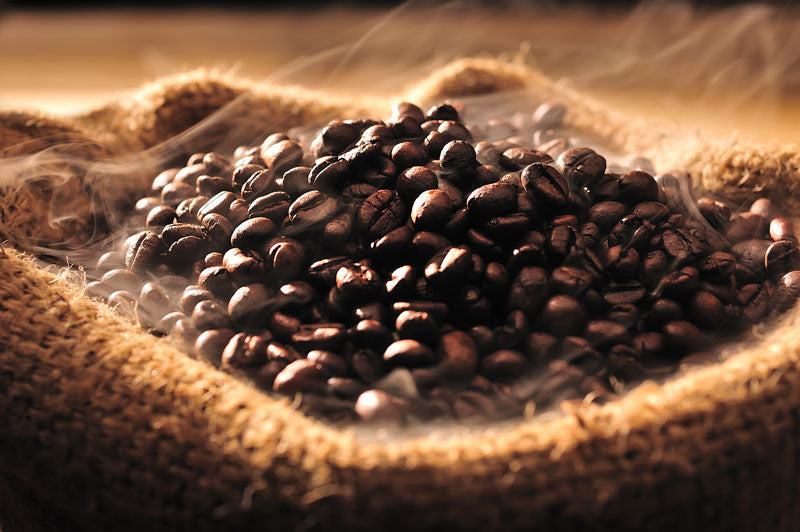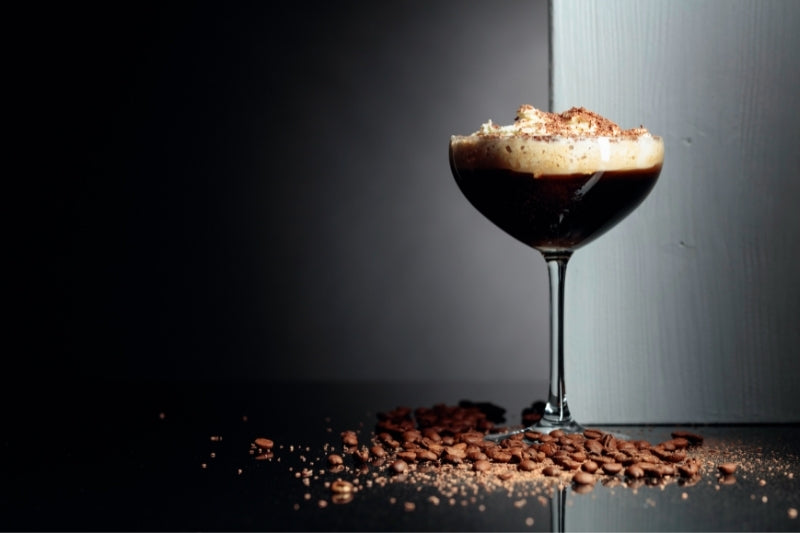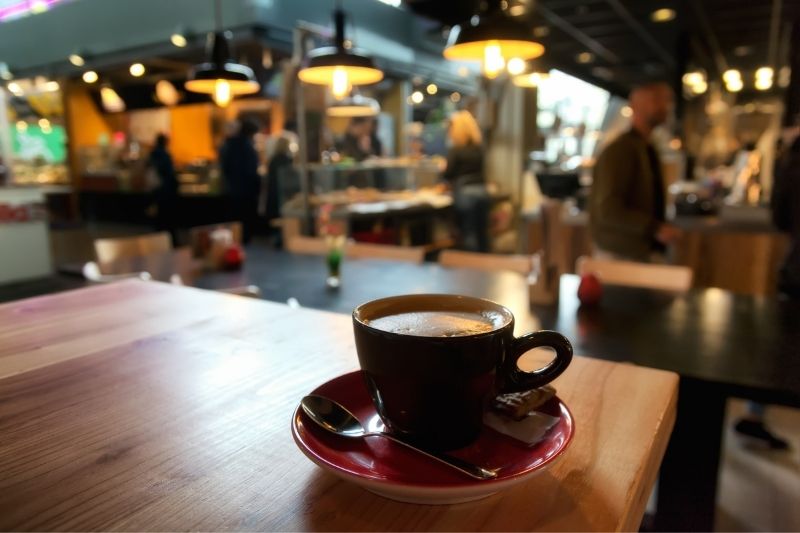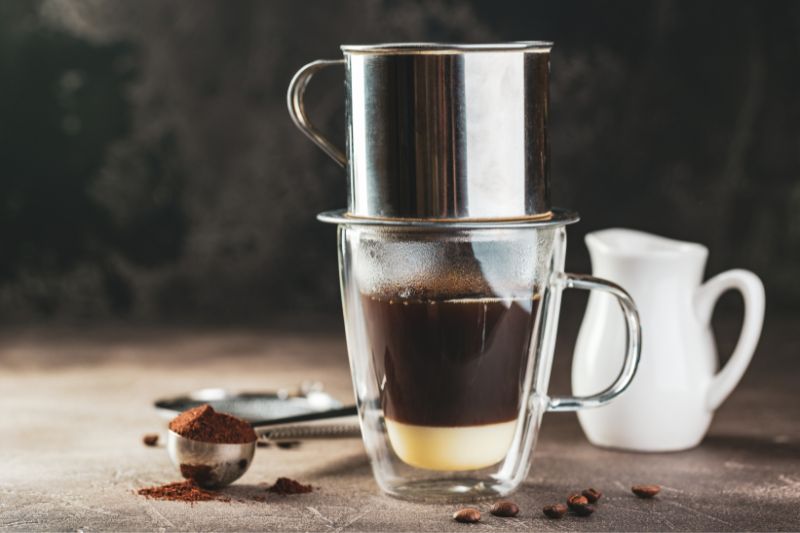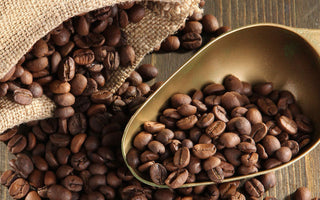No coffee knowledge is complete without appropriate jargon and a little know-how about fun facts from the world of coffee. So, today I am going to talk to you about a few terms regarding premium coffee flavor.
Knowing these terms and their meaning will sharpen your coffee sensory skills, that is you will be able to identify and decipher different flavors. In general coffee, sensory helps with brewing coffee as well because as you taste it you understand if you brewed it correctly.

Basically, there is no reason why you shouldn’t know all this so let’s learn some coffee flavor terms together.
Here’s what we are going to cover:
What is Sensory in Premium Coffee
The sensor system was given to us by Mother Nature as a warning signal for the identification of dangerous substances. We still use them for this today (e.g. recognizing food freshness and quality). An adult human has around 2,000 to 5,000 taste buds. In the case of an infant, there are twice as many.
Our taste is influenced by many things: from a purely organic point of view, the sense of smell, the brain, the sense of touch and perception work together to provide us with a holistic taste picture. But personal impressions and memories also play a major role!

Like taste, the sense of smell is closely related to feelings. The reason: Both senses are linked to the involuntary nervous system. So when we try and describe a coffee, it's always about the interplay of:
- Smell
- Acidity
- Bitterness
- Body
- Aftertaste
When recognizing smells, the brain falls back on existing information. This means that unknown smells and tastes can be classified as negative than known ones. Experts are characterized by the fact that they have already tasted a lot and therefore have a wide repertoire of taste nuances and the ability to describe them.
In certain cases, many coffee professionals are also able to tell where the coffee is from just by drinking it! But that takes a lot of practice so don’t get disheartened if you try and get it wrong.

Premium Coffee Taste Modalities
There are 5 taste modalities on the tongue itself that are passed on to the brain: sweet, sour, salty, bitter, and umami. However, we consciously perceive "only" 4: sweet, sour, salty & bitter.

Sweet Coffee Taste
The tip of our tongue perceives everything sweet the most. In terms of evolutionary biology, sweet is classified as "good". Sweet unconsciously means "rich in nutrients" and thus ensures survival. That's why we love everything that's sweet.
The fact that we perceive something as sweet is mainly triggered by sugar and derivatives such as fructose or lactose. Coffee roasting produces - among others - also sweet aromas and taste nuances - from floral to caramel and nougat to chocolate.
Sour Coffee Taste
Green coffee has a high acid content. So acid is a natural component of premium coffee. During the roasting process, this acid is gradually broken down and the bitterness increases to the same extent. A good level of acidity is the quality criterion for a good coffee!

Bitter Coffee Taste
There are 5 types of bitters, but only one of them is good, i.e. the intentional one: the bitterness that arises from roasting. As mentioned above during the roasting process, acids are broken down and bitterness builds up.
Roasters of premium coffee know how to control this process and give the coffee only good bitterness attributes.

Salty Coffee Taste
The salty taste is of course extremely important to us. However, it should hardly be used when determining the taste of coffee, because as soon as the coffee tastes salty, then something is wrong: either in the beans themselves or in the preparation or the machines on which the preparation was carried out.

Umami Coffee Taste
Umami is the fifth taste quality and is the name for a full-bodied taste. The umami taste is caused by the amino acid glutamic acid, which is naturally found in small amounts in protein-containing foods such as meat, cheese, tomatoes, and mushrooms. Umami particularly indicates foods rich in protein.
When describing coffee, umami is important insofar as it describes the coffee body, its density, and the mouthfeel. When you hear someone say "the coffee is" plump "or" soft and creamy " or "the coffee sticks to the palate" then this is a typical umami taste quality. Just like tomatoes or a great piece of meat, coffee can also be full, heavy, soft or delicious. Umami makes the taste experience "round", so to speak.
Premium Coffee Flavor Wheel
The taste spectrum of coffee ranges from dark chocolate to nougat and caramelized hazelnuts to citrus notes or floral notes such as jasmine. And that without the addition of sweeteners or artificial flavors.
The taste of the coffee is influenced by several factors. The type of coffee plays a major role: Arabica coffee tastes milder and more nuanced than Robusta coffee. To identify the individual taste nuances, it is helpful to consult the flavor wheel.

As described above, the taste of coffee is perceived through the sense of taste and smell. Therefore the wheel consists of 2 halves: The flavors are shown on the right half, the four taste qualities sweet, sour, salty, and bitter on the left.
Now, I know you are probably thinking this seems like a lot. Can coffee really have all these flavor attributes? Well, not all of them at the same time, these are words used to describe a particular coffee’s flavor and aroma. To understand them we must first talk about the body and acidity in coffee.

Body
The body is the texture of a coffee. It is the feeling that the coffee gives in your mouth. It is the viscosity, weight, or strength that is felt on the tongue. It is noteworthy that there are significant differences in this area.
The body is not something you taste, it is a sensation that you feel. However, it can affect the overall taste of a coffee both negatively and positively. This is because the taste is a combination of many factors: aroma, texture, flavor, preferences, and mouthfeel, they all have an influence on your tasting experience.
In order to define the body, we need to explore the coffee’s origin. There are many factors that determine why one coffee has more body than another. Some types of coffee are predestined to develop more body. Others, such as many of the African coffees, tend to develop a medium to light body.
It is certain that the coffee preparation methods, the roasting profile, and, ultimately, the brewing process influence the properties of the coffee. Certain types of coffee tend to be more full-bodied. Often it is coffee from Central and South American countries or coffee from South Asia.
Common Body Descriptors
Ultimately, it all comes down to your own preference. Usually coffee with a light body will come with descriptors such as “tea-like”, “clean”, “floral”, “mild”, “jasmine” “mellow” and “fragrant”. On the other hand, a coffee with a full body will be described as “creamy”, “rich”, “syrupy”, and “buttery”.
If you see any of these words on a coffee bag, the roaster is trying to tell you this coffee has either a light or a full body. Based on your own preferences you now have a better idea if you will like this coffee or not.

Acidity
Acidity is a so-called secondary plant substance. What that means is that it comes in plant-based nutrients. It is therefore basically one of the non-harmful acids. As you know, acidity is not just a component of coffee.
Many types of fruit such as apples, grapes, pears, and apricots or vegetables such as carrots, tomatoes, aubergines, and celery also contain acids. Moreover, there are big differences in the acidic taste of coffee.

An aggressive acidic taste can spoil the moment of coffee enjoyment, whereas a fresh and fruity acidic taste can add that “certain something” to the coffee drink. Many underestimate how important this is for a delicious, aromatic coffee.
When it comes to acidity in coffee, it is important to distinguish between chlorogenic acid and fine, flavor-intensive acids. While the fine acids are relevant for the typical coffee taste, the chlorogenic acids make the coffee taste unpleasantly sour.
Chlorogenic acid makes up the largest proportion of caffeic acid in coffee beans. Simply put, chlorogenic acid is a powerful natural antioxidant. Chlorogenic acid is responsible for how strongly you perceive the acidic taste of your coffee.
Fine acids are often found in arabica beans from higher elevations. Its taste is reminiscent of citrus fruits such as orange, lime or grapefruit, or even other fruits such as apple, pear, and tropical ones. These acids give the coffee a fruity, fresh taste.
It is the job of the roaster to control chlorogenic acids and enhance the fine ones so you can enjoy the full potential of your coffee.
Common Acidity Descriptors
To help you distinguish between coffee with high, moderate, and low acidity, there are certain descriptors on the coffee bags. Words like “citrus”, “berry-like”, “fruity”, “orange” describe a coffee with high acidity, so if you are into that then this is definitely a coffee for you.
Moderate acidity is something you will find in coffees with descriptors such as “apple”, “pear”, “candied orange”, “fermented strawberries”, “fruit compote” and anything indicating cooked fruit, where the acidity is there but in combination with sweeter notes.
As for low acidity, this will be any coffee with descriptors that don’t describe anything acidic such as “caramel”, “nutty”, “candy-like”, “maple syrup”, “chocolate”, and “roasted hazelnuts”.

Coffee Regional Flavor Profiles
Now that you know a bit about the different descriptors used to describe the flavor of coffee, it’s time to take a world coffee trip and find out about regional flavors. The coffee flavor depends heavily on where it grows, the climate, the rainfall, the elevation, etc.
So let’s take this continent by continent.


Centra/South America
Panama
Even if you don't associate Panama directly with coffee, one of the most expensive types of coffee in the world is produced here. The country lies on the Pacific and Atlantic Oceans. Due to its geographical location, Panama has volcanoes and perfectly suitable harvesting areas for coffee.
The most famous variety is geisha. It was imported from Costa Rica in the 1960s and has its real origin in Ethiopia. The geisha from the Hacienda La Esmeralda can count on itself as the second most expensive coffee in the world. The taste is very smooth, flowery, and not strong in the mouthfeel. It's more like tea, and maybe that's why it's so highly regarded in Japan, the tea-drinking culture.
Flavor profile: zesty and lively, spicy and herbal, lemongrass notes
Hawaii
Hawaii offers one of the best growing conditions in the coffee world. They have volcanic soils, which are particularly fertile, a tropical climate for the plants to thrive, and a regularly cloudy sky that protects the coffee from solar radiation. The yield is not very high, but one of the best coffees in the world is sold here.
The Kona coffee is grown in the “Big Island” area and the price per kilo is around 100 euros. The taste of the Kona has a fine aroma paired with notes of chocolate and cinnamon. It has a full-bodied taste that can only be sold as 100 percent Kona coffee under the name "Extra Fancy" or "Number one".
Flavor profile: medium body, low acidity, vanilla, brown sugar
El Salvador
Coffee in El Salvador was first spotted in 1740, grown for personal use and is the fourth largest source of income in the country. El Salvador is known for its simple, original coffee, but also for high-quality organic coffee. The use of agrochemicals is banned across the country.
The taste is determined at high altitudes and has a blue-green bean color. The coffee has a light but noticeable body paired with fine acidity and an intense aftertaste.
Flavor profile: mild acidity, vanilla, hazelnut, chocolate, pear

Costa Rica
The English brought the coffee plant to Costa Rica as early as 1830. With its ideal climate, strict water regulations and environmental protection measures, Costa Rica has developed into an important coffee-growing country for top-quality coffee.
The Tarrazú variety, which grows in the south of San Jose, is considered one of the best types of coffee in the world. The volcanic soil is also very fertile, which makes Costa Rica an ideal cultivation area. In general, coffee from Costa Rica is very mild and digestible.
Flavor profile: medium body, citrus, nutty
Peru
Exceptional Peruvian coffee grows in the regions of Chanchamayo and Urubamba. Chanchamayo is located on the slopes of the Andes mountain range while Urubamba is close to Machu Picchu.

Due to the elevation and the climate, Peruvian coffee is characterized as smooth and delicate, with good balance and a pleasant aftertaste.
Flavor profile: medium body and acidity, spicy and nutty, chocolate, earthy
Brazil
The South American country Brazil produces 34% of the world's traded coffee on 2.3 million hectares, making it the clear number 1 in the world, a long way from number 2, Vietnam. There are around 287,000 coffee-growing farms in Brazil, ranging in size from one hectare to 25,000 hectares of land.
Around 45 million sacks of 60 kg coffee beans are harvested on these cultivation areas each year, around 80% of which are Arabica and 20% Robusta beans. The Brazilians consume a large proportion of the coffee harvest themselves, as almost a third remain in the country.
Flavor profile: medium body, caramel, and chocolate, flowery and fruity

Colombia
The coffee beans from Colombia are valued all over the world for their quality. The main growing regions are the departments of Quindío, Caldas, and Risaralda, collectively also known as "Eje Cafetero", the so-called coffee triangle of Colombia.
Around 66% of the coffee bushes are cultivated on modern farms, and the harvest is mostly done by hand. The rest of the coffee grows on small, family-run plantations. In total, around 20% of the harvest, mostly defective or poor quality beans, remains in the country itself.
The coffee is known for its full body and its good balance between sweetness and acidity, connoisseurs even recognize light tropical notes.
We have a detailed blog post about Columbia Coffee. Please click here to access the blog post.
Flavor profile: medium body, medium acidity, fruity and nutty
Honduras
Honduras is the largest coffee producer in Central America and the sixth-largest in the world. The country has one of the most nutrient-rich soils in Central America. The highland area offers an altitude of 1,000 to 2,000 meters. In line with its tropical climate, high-quality coffee also grows in Honduras.
The largest growing areas are mainly in the west and in the middle of the country. Honduras mainly specializes in Arabica, although a small part of the country also grows robusta.
Flavor profile: crisp, light-bodied, nutty, and spicy
Guatemala
Guatemala is located in the geographical coffee belt and offers the best conditions for a good coffee thanks to its tropical warmth and humidity. Some of the coffee grown in Guatemala is grown in the largest artificial forest in Central America.

The plantations of Guatemala are mostly located in the south of the country and are planted together with shade trees. The shade trees on the plantations are particularly important as they protect the coffee plants from direct sunlight.
The country has 34 active volcanoes, which provide fertile soil and, due to their different heights, produce different tastes in coffee.
Flavor profile: spicy, smokey, earthy, delicate, floral, sweet

Africa
Ethiopia
Ethiopia is the country of origin of coffee. The African country has hardly any modern coffee farms because here the coffee is mainly harvested by small farmers under natural conditions. In 2018, the country exported around 6 million bags, making it the fifth-largest exporter in the world.

The typical Ethiopian coffee is forest coffee from wild coffee trees and garden coffee whose cherries grow on bushes in the plain and not on the slope. Due to the wild growth, Ethiopia has a unique diversity of species and varieties.
Flavor profile: medium-full body, blueberry, chocolate, flowery and herbal
Kenya
The first trees in Kenya came from Ethiopia in the 19th century, but it was not until the beginning of this century that missionaries introduced the valuable Bourbon trees. They are cultivated in 1,300 large plantations and by 600,000 small producers in cooperatives.
Most Kenyan coffee grows at an altitude of 1500 to 2100 meters. It is usually harvested twice a year. Since only the ripe coffee cherries are picked, it can sometimes happen that the entire plantation has to be harvested up to seven times. The harvest volume in 2016 was 1.6 million sacks.
Flavor profile: full-body, zesty and floral, citrus and herbal

Yemen
Coffee has been grown in the traditional way in Yemen for centuries. The coffee plants grow best at an altitude of 2,000 to 2,500 meters. Thanks to partly artificial irrigation, the coffee cherries can also be cultivated on the mostly barren soils. Due to a lack of financial means, coffee is grown without chemical agents, in an organic way.
Particularly famous is the Mocha variety. The taste brings a combination of full acidity and spicy sharpness. The aroma is mild and yet very aromatic. A note of chocolate is noticeable in the aftertaste.
Flavor profile: full-body, chocolate, winey
Rwanda
The quality of Rwandan coffee is outstanding - this is ensured by the ideal cultivation height, regular rainfall, the tropical climate, the fertile soils, and the high population of old bourbon trees.
Coffee from Rwanda is one of the best in the world. It is described as velvety and harmonious and has a pronounced body. Noble nuances of flowers and fruit, especially berries, apples, and red wine grapes, complete the taste experience.
Flavor profile: medium body, chocolate, floral, nutty, fruity

Asia
China
When you think of Asian specialty coffee, China will admittedly not be the first growing country that comes to mind. If you look at the Asian continent, countries like Indonesia or Papua New Guinea have climbed to the top of Asian specialty coffee in recent years.
But China is catching up and that’s no surprise in terms of climate and geography. Many regions of the huge country offer the best conditions for specialty coffee cultivation. The southern Chinese province of Yunnan in particular is now considered to be one of the best coffee regions in Asia.
Flavor profile: medium body, chocolate, smooth
India
Due to its historical heritage, coffee from India is mainly obtained in the southern Indian provinces of Karnataka, Kerala, and Tamil Nadu, but more and more new growth areas are being developed, e.g. in the mountainous northeast of the country.

Different types of coffee are grown at different altitudes. Many coffee connoisseurs are probably familiar with the Monsooned Malabar, 100% Arabica coffee that gets a mild and sweet note from wind and moisture. During monsoon, the coffee beans are subjected to a special endurance test.
This unique coffee bean refinement was discovered on the Indian Malabar coast. The warm monsoon rain cleans and rinses the coffee beans, giving them an extraordinary taste.
Flavor profile: full body, spicy with medium acidity, tropical fruit
Papua New Guinea
Like cocoa and palm oil, coffee plays a crucial role in the economy of Papua New Guinea. A large part of the population works in agriculture and coffee production. The island nation in the South Pacific primarily produces highland coffee, which thrives on mountain slopes at altitudes between 1,300 and 1,900 meters above sea level.
Pesticides and other chemical additives are simply too expensive for coffee farmers from Papua New Guinea and their coffee grows under natural conditions. 95% of these are Arabica beans of the types Bourbon and Typica, which, due to their organic growing conditions, have only a medium level of acidity and comparatively little caffeine. Attributes such as full-bodied, strong, earthy, and fruity are used to describe the taste.
Flavor profile: full body, medium acidity, fruity, earthy
Indonesia (Java & Sumatra)
In Indonesia, coffee is not just a way of life, it has become an important commodity. Along with the heavyweights Brazil, Vietnam, and Colombia, Indonesia is one of the largest coffee producers in the world.
Coffee is not only consumed by Indonesians but also has become a source of livelihood for many people. From coffee farmers to coffee traders, coffee is an integral part of many people's daily lives. The country mainly produces Robusta beans, but the proportion of Arabica beans has also increased to almost 15%.
Indonesia produces some of the finest premium beans in the world, the best known but also controversial is the Kopi Luwak, also known as cat coffee.
Flavor profile: full body, low acidity, chocolate and creamy
Australia
“Australian coffee?” one will ask in amazement. There actually is - but very little of it. The world market share of Australian beans is less than 0.1 per mille. No wonder that even die-hard coffee lovers don't know anything about the growing country Down Under. It's a shame - because Australia has a lot to offer when it comes to coffee!

In Australia, Arabica beans of the subspecies Bourbon and Typica are grown. Since the continent has very different climatic conditions depending on the region, it is very important for coffee farmers to choose varieties that harmonize with the respective conditions. The high-quality beans from Down Under enjoy great popularity and are recognized as a delicacy by coffee aficionados.
Flavor profile: medium body and acidity, mild, juicy, and syrupy

The Roast Profile
Another way you can guess what your coffee will taste like is by knowing the roast degree. Sometimes this information will be on the bag so watch out for it.
There are three degrees of roasting:
- Light roast
- Medium roast
- Dark roast
Here are chart of common roast type:

The higher the roast degree, the darker the roast, and the more acids are broken down. Coffee made with dark roasted beans, therefore, tastes less acidic, sometimes sweet, and a bit like chocolate.
Dark coffee roasts are almost always more bitter than lighter ones and have more “body”. Fruity aromas of jasmine, citrus, and forest fruits, and pleasant acids come forward with lighter roasts.
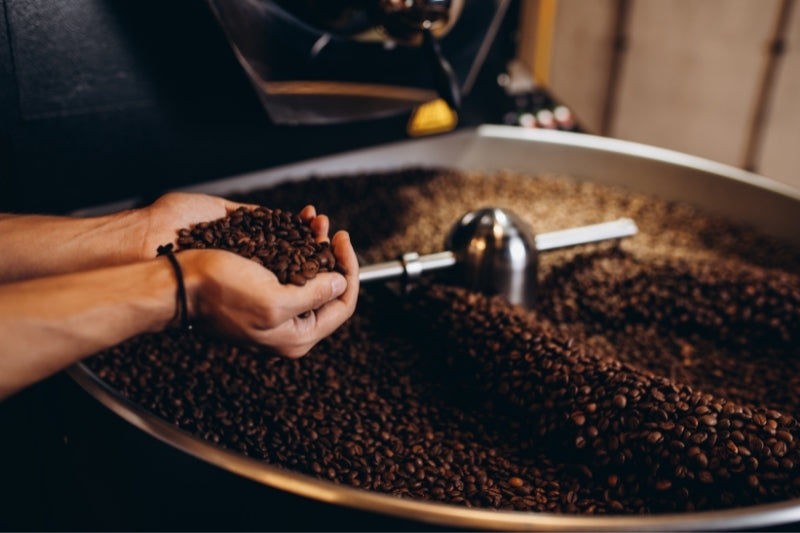
Light roasts have little bitterness and body. During this process, the roaster tries to avoid roasted aromas as much as possible. The natural aromas of the coffee should be placed in the foreground instead. This means that coffee contains a high proportion of fruit acid, which can enhance fruity/floral aromas.
In the case of medium roasts, the caffeine and acid content decreases compared to the light roasts. On the other hand, the bitterness increases slightly due to the increasing roast aromas, and the coffee gets more body.
The medium roast often results in a good compromise between acidity and roasted aromas. A medium-roasted coffee offers a good introduction to the world of premium coffees if you have been a "classic coffee drinker" up to now and do not want to be immediately put off by tastes that are too "unfamiliar to coffee".

The Role of Aftertaste
A finish or aftertaste is the taste that remains on the back of the palate after the coffee has been swallowed. The finish plays a role in judging coffee and is an important criterion alongside aroma, acidity, and body.
When tasting, experts then differentiate between oiliness and the amount of suspended matter contained in the coffee. These two aspects can be assessed particularly well if you rub the coffee in your mouth a little between the palate and tongue. If the interplay is consistent, one speaks of balance or harmony.
What applies to wine when it comes to the finish also applies to coffee here: a long finish is usually a good sign. If the coffee taste stays on the palate for a long time and has an effect, then you know you are drinking premium quality coffee
Final Thoughts
As you can see there is so much more to coffee sensory than you probably imagined!
What’s more, the same coffee can taste completely different as a filter, in a Moka pot, or as an espresso.
In any case, all this information is meant to help you figure out how to navigate the world of premium coffee. It’s actually so much fun to try all these different types of coffee and figure out your own preferences while doing so.
Now that you know a little bit more about coffee sensory, it’s time to try and see if you can identify any of these aromas and flavors. So, have fun testing, tasting, and drinking!
Get Free Bonus Books

Sign up for free to the Coffee Club to get advice and exclusive articles about how to choose Japanese Coffee, and tips, tricks, and recipes for enjoying Japanese coffee.
About the author
Kei Nishida
Author, CEO Dream of Japan
Certification: PMP, BS in Computer Science
Education: Western Washington University
Kei Nishida is a passionate Japanese tea and coffee connoisseur, writer, and the founder and CEO of Japanese Coffee Co. and Japanese Green Tea Co., both part of Dream of Japan.
His journey began with a mission to introduce the world to the unparalleled quality of Japanese green tea. Through Japanese Green Tea Co., he established the only company that sources premium tea grown in nutrient-rich sugarcane soil—an innovation that led to multiple Global Tea Champion awards.
Building on this success and his passion for Japanese craftsmanship, Kei expanded into the world of coffee, pioneering the launch of Japanese Coffee Co., the first company to bring Sumiyaki charcoal-roasted coffee to a global audience. His dedication to authenticity and quality ensures that this traditional Japanese roasting method, once a well-kept secret, is now enjoyed worldwide.
Beyond tea and coffee, Kei has also introduced Japan’s legendary craftsmanship to the world through Japanese Knife Co., making handmade katana-style knives—crafted by a renowned katana maker—available outside Japan for the first time.
Kei’s journey continues as he seeks out and shares the hidden treasures of Japan, one cup and one blade at a time.
Learn more about Kei

